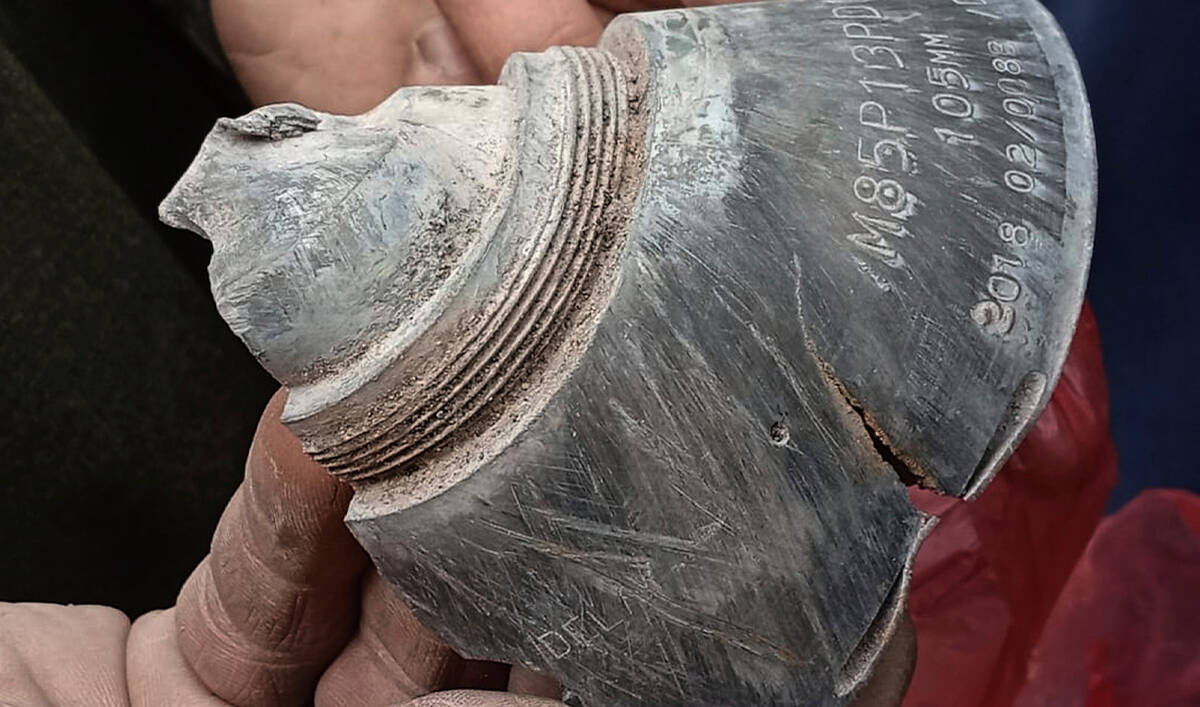ISLAMABAD: Defense Minister Khawaja Asif said on Friday a wave of drone attacks launched by India this week was aimed at detecting the location of Pakistani weapons systems, as PTV state television reported that 77 drones had been shot down.
India and Pakistan have since Thursday accused each other of carrying out waves of drone attacks in the worst confrontation between the nuclear-armed South Asian neighbors in nearly three decades.
Pakistan’s army said it shot down 29 Indian drones on Thursday while New Delhi accused Islamabad of launching overnight raids with “drones and missiles” and claimed it destroyed an air defense system in Lahore, which Islamabad denied.
“Pakistani forces have destroyed a total of 77 Indian drones,” Pakistan Television reported on Friday.
“By the evening of May 8, 29 Indian drones had been shot down, while another 48 drones had been destroyed between last night [Thursday] and today [Friday].”
The fighting comes two weeks after New Delhi blamed Islamabad for backing an April 22 militant attack in which 26 were killed at the Pahalgam tourist site on the Indian-administered side of disputed Kashmir. Pakistan has denied involvement. On Wednesday, India said it had struck “terrorist camps” at nine sites inside Pakistan. Islamabad vowed retaliation and said it had shot down five Indian fighter jets.
The longstanding rivals have fought multiple wars over the disputed Kashmir valley since they were carved out of the sub-continent at the end of British rule in 1947. But while the conflict has been confined in recent decades mostly to the mountainous region of Kashmir, which both nations claim in full but rule in part, the air strikes on Wednesday morning, which also hit the towns of Bahawalpur and Muridke in the country’s largest and most populous province of Punjab, and the drone incursions into some of the country’s largest cities on Thursday, were seen in Islamabad as a major escalation.
One drone was shot down over the garrison city of Rawalpindi, home to the Pakistan army’s heavily fortified headquarters. Another hit a military target near Lahore, the capital and largest city of the province of Punjab, and the second-largest city in Pakistan after Karachi. The army said four military personnel were injured in that attack.
Other places where drones were neutralized were Gujranwala, Chakwal, Attock, Bahawalpur, Miano, Chor and near Karachi, which is the country’s largest city and commercial capital.
The drone attacks have raised questions about how the drones were able to get so far inside Pakistan’s airspace.
Speaking in parliament, Defense Minister Khawaja Asif said the Indian drone attacks were launched to detect the location of Pakistani defense systems.
“That is why they weren’t intercepted, so that our locations are not leaked or located. When they came down to a safe limit, we shot them down,” Asif said.

A local resident shows a piece of shell fired by Indian forces, at his damaged house in Haveli Kahuta, a district of Azad Kashmir, Pakistan, on Friday, May 9, 2025. (AP)
Air defense officials have backed this version, with one saying, on condition of anonymity, that the drones were mounted with Electronic Support Measures (ESMs), a technology for passive collection and interpretation of electromagnetic signals, such as e.g. radar pulses. Two or more coordinated ESM sensors can use information to geolocate the emitting radar.
“Their purpose is to detect radiations of ground-based air defense systems, and through a data link transmit the location to their [Indian] command centers,” one official said, declining to be named. “Through that their [Pakistani weapons systems] locations could get disclosed.”
He said once Pakistan understood the purpose of the drones, “it was decided that we will not engage them with long-range air defense that work on missile guidance systems.”
“We decided we either have to use soft kill, that is to make them fall through jamming or if they come lower down, then we shoot them with gun weapon systems … Henceforth, when the drones reduced altitude, they were shot down with guns.”
“OFFENSIVE ACTIONS”
The Indian army said on Friday Pakistani troops had resorted to “numerous ceasefire violations” along the countries’ de-facto border in Kashmir, called the Line of Control.
“The drone attacks were effectively repulsed and a befitting reply was given to the CFVs (ceasefire violations),” the army said, adding all “nefarious designs” would be responded to with “force.”
Pakistan Information Minister Attaullah Tarar said the Indian army’s statement was “baseless and misleading,” and that Pakistan had not undertaken any “offensive actions” targeting areas within Indian-administered Kashmir or beyond the country’s border.
In Pakistani Kashmir, which is known as Azad Kashmir, officials said heavy shelling from across the border killed five civilians, including an infant, and injured 29 in the early hours of Friday.
World powers from the US to China have urged the two countries to calm tensions, and US Vice President JD Vance on Thursday reiterated the call for de-escalation.
“We want this thing to de-escalate as quickly as possible. We can’t control these countries, though,” he said in an interview on Fox News show “The Story with Martha MacCallum.”
The Saudi minister of state for foreign affairs Adel Al-Jubeir is also scheduled to visit Pakistan on Friday. Al-Jubeir was in India on Thursday and met Indian Foreign Minister Subrahmanyam Jaishankar, who said he “shared India’s perspectives on firmly countering terrorism” with him.
With inputs from Reuters












